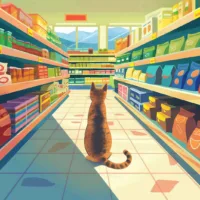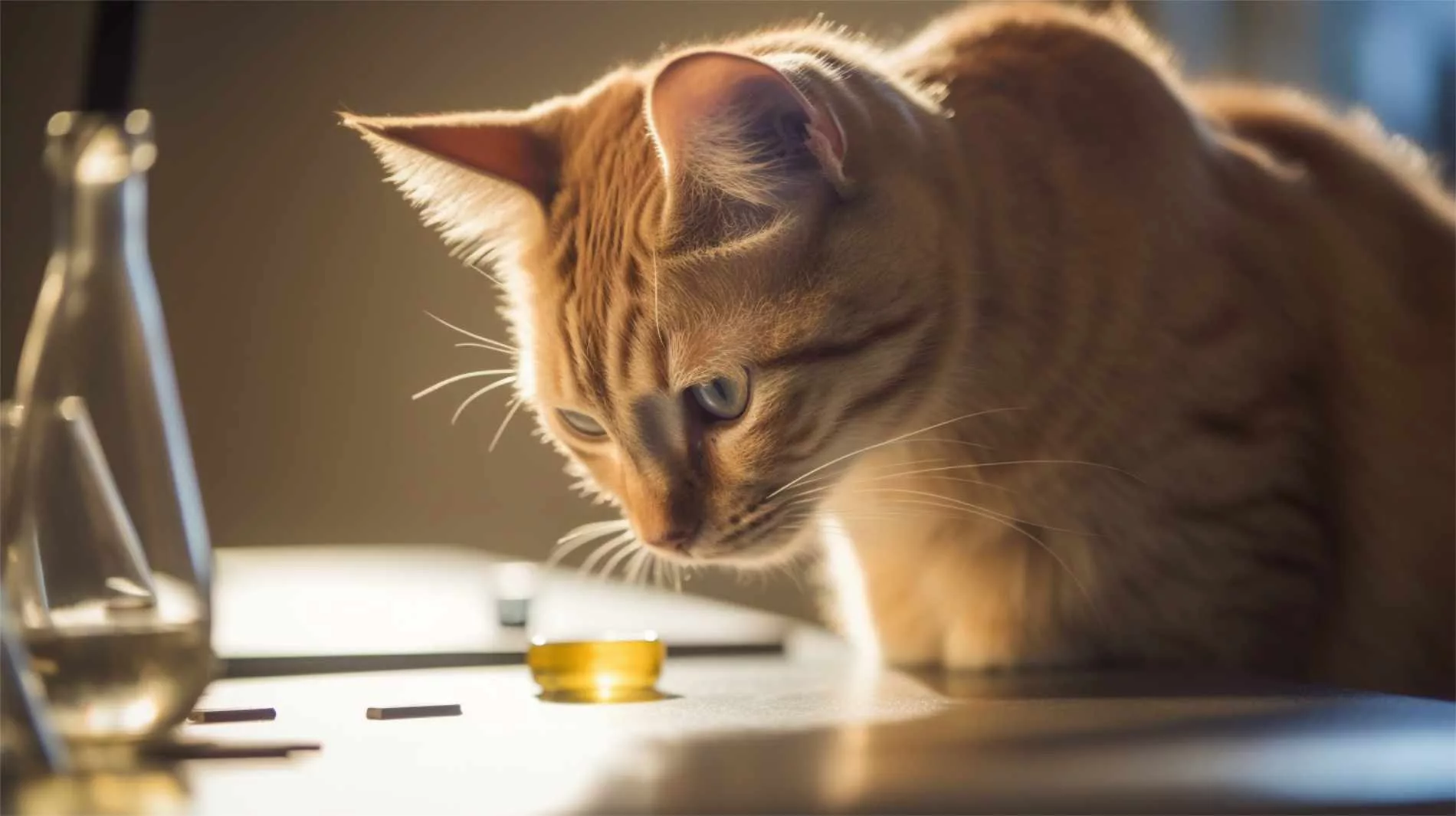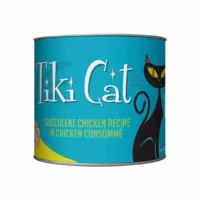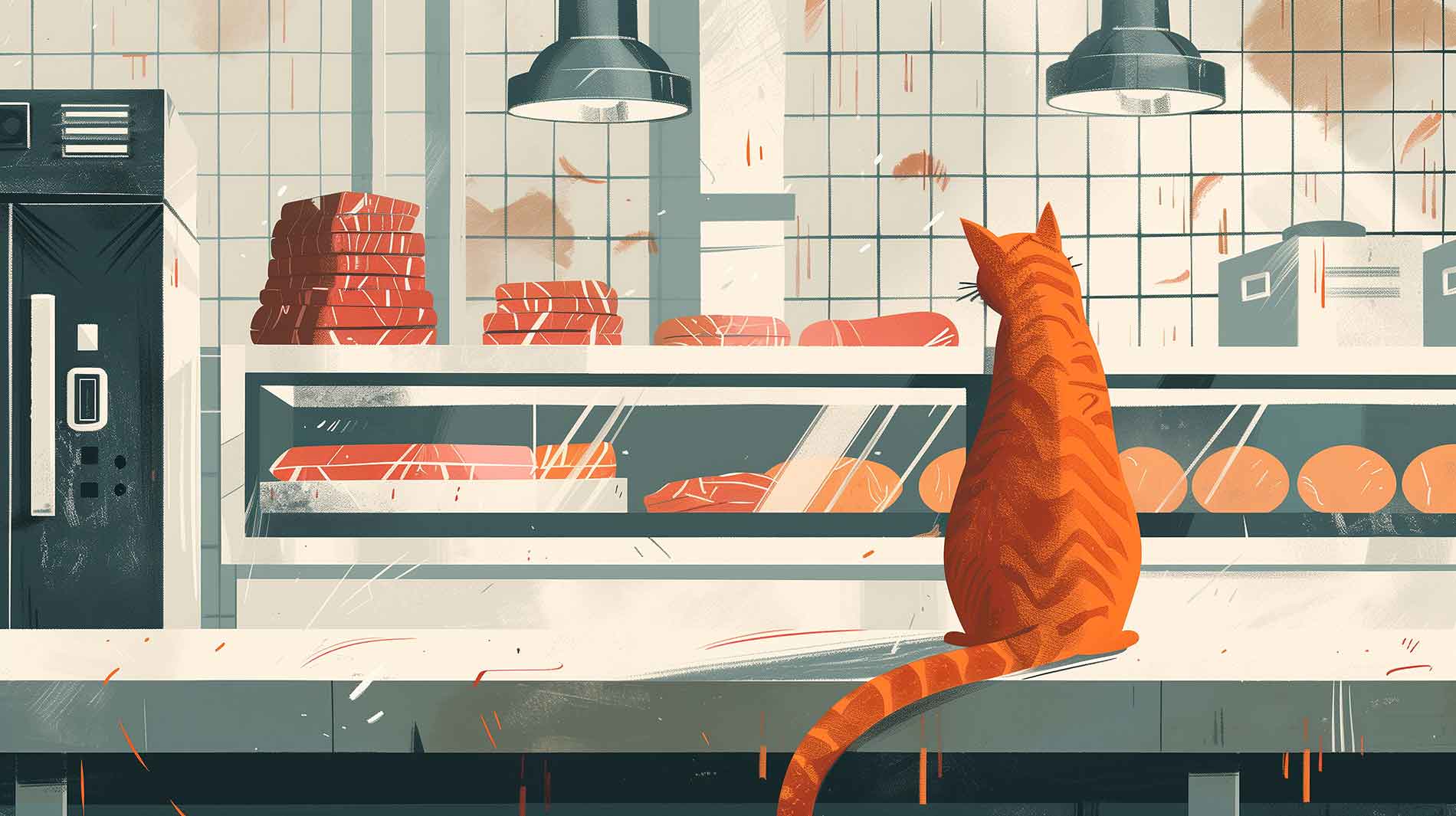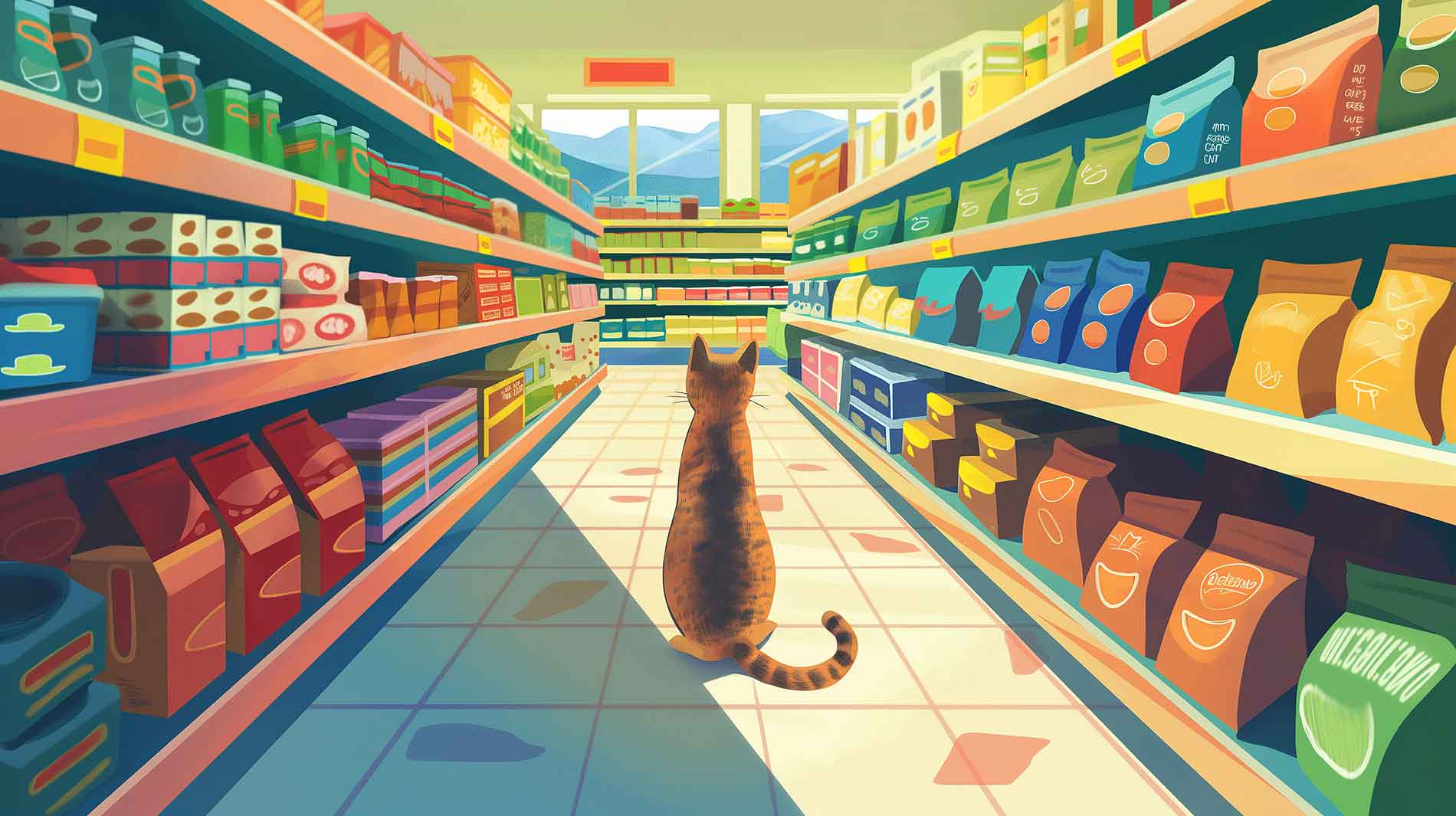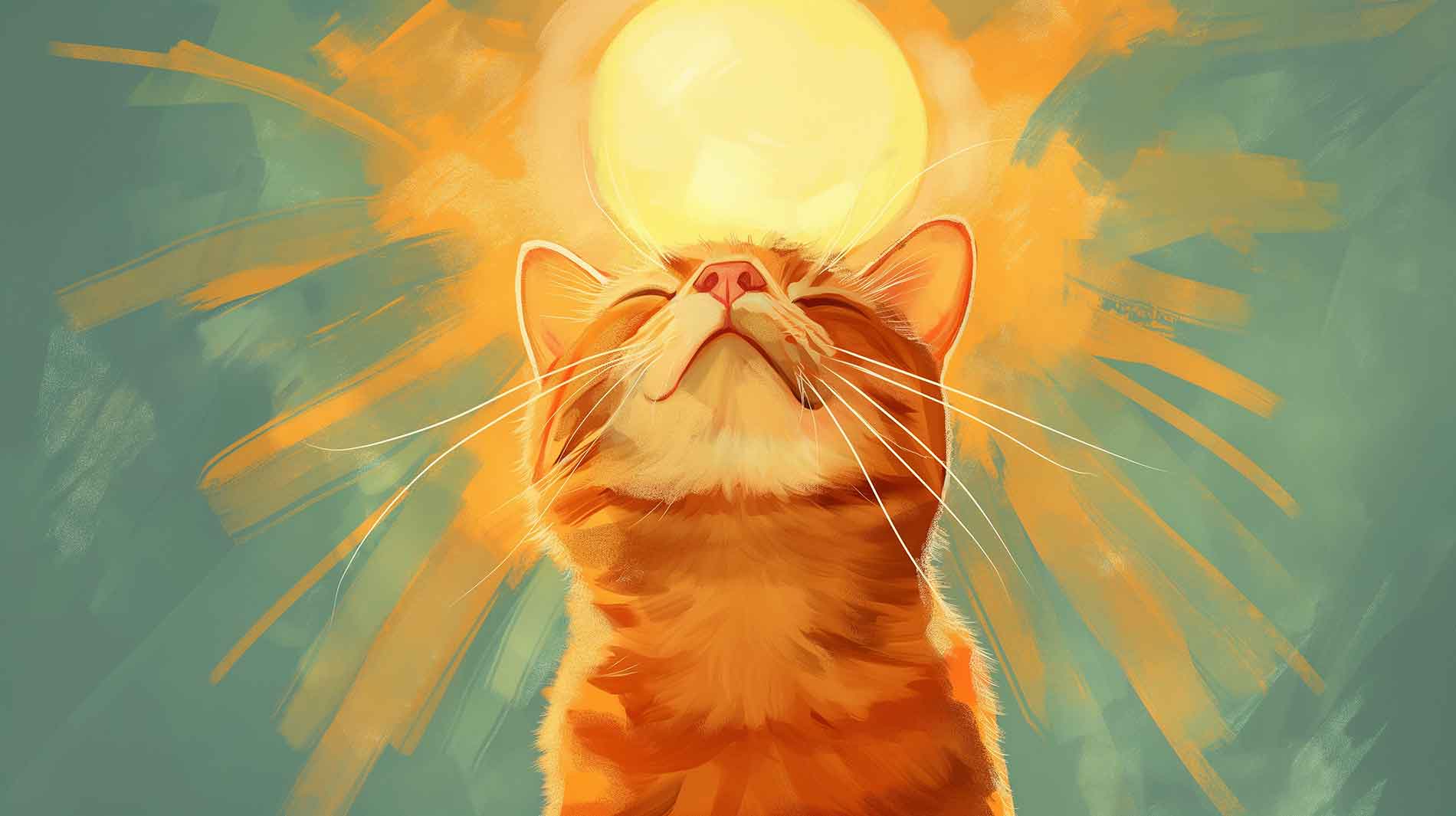Unveil the secret behind what ends up in your cat’s bowl. We present our cat food assessment process and help you dive into the fascinating world of food testing. We tell you what really matters so that you can evaluate your own cat food at home.
Preface
All the information we use for the evaluation comes from the packaging and product pages of the manufacturers. However, please note that this information can only serve as minimum values. It is intended to give you an overview of the quality of different types of food. It is always advisable to remain skeptical and to critically question both the manufacturer’s information and our evaluation.
We can only evaluate what is indicated by the manufacturers on the packaging. The amount and type of information can vary from manufacturer to manufacturer. Some, for example, indicate the calcium, phosphorus, and ratio value, while others do not. However, comprehensive and transparent labeling can be rated positively with regard to the criterion of consumer transparency and can lead to a better result.
In addition, we have introduced the criterion “brand”. We believe that companies that pursue a strong mission and support, for example, animal protection should be positively rated, even if this does not directly influence the quality of the cat food.
All criteria are evaluated considering a healthy, 4 kg (8.8 lb neutered indoor) cat. Please note that this serves as a general guideline and the individual needs of your cat should be taken into account.
If you have any questions, feel free to contact us.
1. Composition
High-quality cat food is characterized by a carefully balanced composition. Here we evaluate the ingredients and their quality. It is important that the food is made from high-quality ingredients that meet the nutritional needs of the cat. This includes a high proportion of meat, the absence of inferior animal components, and the omission of (for cats) unnecessary additives such as sugar, fillers, and vegetable fats. Also, the smell, texture, and visual appeal of the food provide good indicators of quality. A high score in this criterion means the food supports the cat’s well-being and contributes to long-term health with optimal ingredients.
1.1 Protein. The cat food contains a balanced protein content, which corresponds to the recommended minimum value of 33 g / 100 g dry matter (We still consider the neutered (indoor) cat and adhere to the recommended values of the FEDIAF Guideline.
1.2 Meat content. The food convinces with a high meat content of at least 67% (rounded to zero decimal places), which meets the needs of carnivores.
1.3 Protein sources. These should either all come from the same animal or at least from similar animal species or the second source should have a low proportion. Wildly mixed up animals suggest that there are leftovers added to the food.
1.4 Moisture content. With a content of at least 70% water, the product ensures sufficient fluid intake.
1.5 Avoidance of inferior animal ingredients. The cat food relies on high-quality protein sources and does not contain inferior ingredients such as udders, hooves, or feathers.
1.6 Avoidance of unnecessary ingredients. The food does not use unnecessary ingredients such as Yucca Schidigera or catnip. Ingredients are considered unnecessary if there is no evidence that they have benefits for healthy cats. We believe that cat food should be limited to ingredients that have been proven to be beneficial for cats (otherwise, they are considered “unnecessary”).
1.7 Fats/oils. No vegetable fats or oils are used, only fats and oils of animal origin. Various literature suggests that cats can only convert linoleic acid to arachidonic acid to a limited extent, which is why the use of fish oil is often recommended to provide valuable polyunsaturated fatty acids to the cat. For example, coconut oil has been suspected in the past of causing health problems.1
1.8 No added sugar. The product completely avoids added sugars, including complex sugars (while it is legal to advertise as “without added sugars” even if complex sugars are present, we generally consider sugar unnecessary for cat food).
1.9 No thickening agents. The diet does not contain any thickening agents such as cassia gum, locust bean gum, or similar substances.
1.10 Avoidance of fillers. The product avoids fillers such as cellulose powder.
1.11 Smell. The cat food impresses with a pleasant smell, indicating good quality.
1.12 Texture. The texture of the product appears appetizing and enables optimal dental abrasion due to the included filet pieces.
2. Declaration
It is important that the information on the packaging of cat food is clear and complete. This includes the precise listing of ingredients and their percentages so that you know what is contained in the food. No confusing or ambiguous terms should be used. Clear feeding instructions should also be provided so that you know how much food your cat should receive. The declaration should be transparent and help you, the consumer, assess the quality of the food.
2.1 Declaration. It should not contain vague descriptions of by-products such as “animal by-products” or similar terms.
2.2 Ingredients. All ingredients must be listed, and the percentages should add up to 100%.
2.3 Complete transparency. Provide accurate percentage values for all ingredients. No ambiguous statements force you to guess, such as “rabbit meat 67% (liver, heart, muscle meat 10%)”.
2.4 Use of terms. The term “meat” in the ingredient list does not include other components such as “broth” or “offal.” Meat is also not equivalent to mechanically separated meat.
2.5 Statements. No ambiguous statements such as “pork” without specifying the specific parts (muscle meat, heart, liver, etc.).
2.6 Feeding instructions have five sub-points:
2.6.1 They must not be unclear or incomplete.
2.6.2 The daily feeding recommendation (weight of food per day) must be provided.
2.6.3 A note that water must be available is required.
2.6.4 The distinction between complete and complementary food must be indicated.
2.6.5 The feeding recommendation for a 4 kg (8.8 lb neutered indoor) cat should not deviate more than 10% from the calculated food mass per day to avoid potential undernourishment of the cat.
3. Nutrient content and balance
It is crucial that cats receive a balanced diet that contains all the necessary nutrients in the right amounts. Cats have specific dietary needs such as animal protein, taurine, trace elements, and vitamins. Reviewing the nutrient content and balance in cat food ensures that your cat’s needs are met and that they can lead a healthy and active life. Analyzing this category can identify potential deficiencies or imbalances to evaluate whether the product meets high standards for optimal nourishment.
3.1 NFE content. Nitrogen-free extract substances in high-quality cat food comprise the carbohydrate sources of the food, including animal glycogen sources such as muscle meat and liver. A low NFE content of up to approximately 20% in the dry matter of cat food ensures that cats should not experience digestive or metabolic issues.
3.2 Sufficient Taurine. Taurine is essential for cats, and they can only obtain it through their diet. That means it is better to slightly overdose than to underdose. Excess taurine is simply excreted, and there is no “maximum level” specified by FEDIAF. However, too little taurine is life-threatening. Therefore, if the minimum recommended level by FEDIAF is not reached, there is a deduction of points.
3.3 Trace Elements. All trace elements from the FEDIAF table (if nutritional values are provided on the packaging or product page) are reviewed. This results in 6 sub-points: zinc, iodine, copper, manganese, selenium, and iron. Similar to taurine, there is a deduction of one point for each trace element if the minimum value is not reached.
3.4 Minerals. Here, there are 7 sub-points: calcium, phosphorus, their ratio, potassium, sodium, chloride, and magnesium. One point deduction if the calculated values are too low.
3.5 Vitamins. Similarly, there are 12 points for various vitamins (refer to the FEDIAF table), including A, D3, E, B7 (biotin), other B vitamins, and choline (although strictly speaking, not a vitamin, it is often grouped with the B vitamins due to its similarity).
3.6 Ingredients should be separately cooked. Different ingredients require different cooking times, and often the nutrients of vegetables are depleted due to high temperatures.
4. Consumer Transparency
The aim is to evaluate clear and honest consumer transparency and ensure that companies provide accurate information about their product. This gives consumers the opportunity to make informed decisions and choose high-quality products.
4.1 No use of fake certificates or misleading claims such as “natural” or “made in Sweden” as they do not provide meaningful information.
4.2 No advertising with self-evident claims such as “natural ingredients” as it is misleading.
4.3 Omission of relevant information is penalized, e.g. it is relevant for you and your cat that fillers have been added, but it is omitted.
4.4 Claims not based on facts result in a deduction of points. This applies to both packaging claims and information on the company’s website. An example is claiming that ingredient X provides health benefits to cats when there is no scientific evidence to support it.
4.5 Hidden or disguised ingredients result in a deduction of points. An example would be stating “no added sugars” even though complex sugars are present. Although this is legally acceptable, we consider it morally questionable.
4.6 No false claims about the type of production. If it is claimed that the production is “natural” and “gentle” when it is actually heavily processed food, this is considered a false claim.
5. Brand
The aim is to evaluate the brand in terms of animal welfare, environmental protection, corporate culture, community engagement, animal testing, and the recyclability of the materials used. This rewards companies that take social responsibility and make a positive contribution to society and the environment. For each identified indication, we award a bonus point.
5.1 Mention of donations to rescue stations, animal shelters, or animal and species protection.
5.2 No varieties with animal babies such as calf or lamb.
5.3 Meat comes from animals raised in good conditions.
5.4 Mention of volunteering or sponsorship for rescue stations or animal shelters.
5.5 Mention of regionally sourced meat.
5.6 Mention of environmental conservation measures.
5.7 Passionate vision or corporate culture involving employees.
5.8 Engagement in the community, such as volunteer work, sponsorship, or partnerships with local organizations.
5.9 Clarification that no animal testing has been conducted.
5.10 Information on the recyclability of the materials used.
6. Price-Performance Ratio
This category allows for some flexibility in evaluation. An estimated value is created to determine how expensive the food is compared to the average price per kilogram or per day. Then, based on the results of the other categories, the quality is applied to the price using a factor to evaluate the price-performance ratio. This category does not result in direct point deductions but is derived from the evaluations in other categories.

